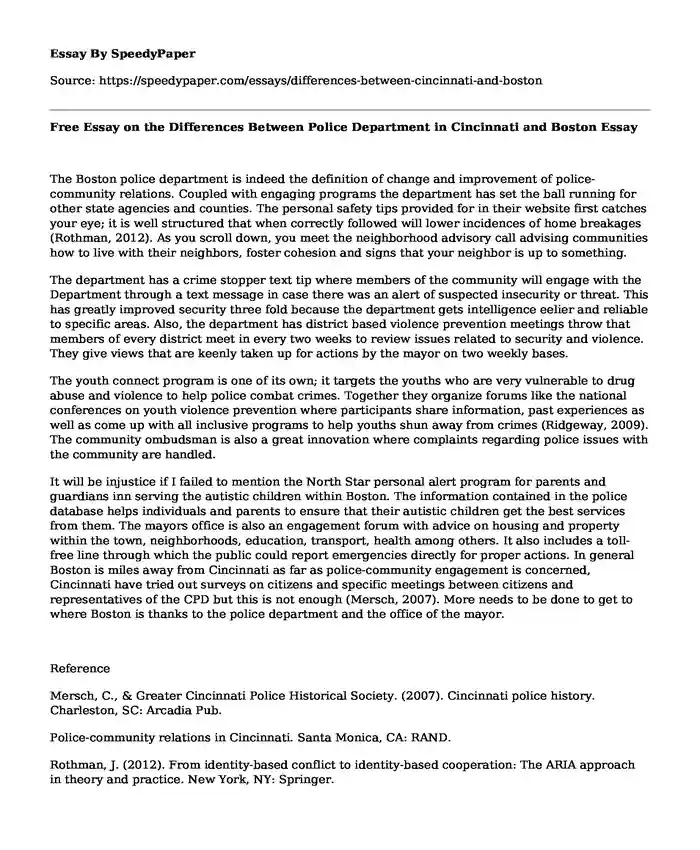The Boston police department is indeed the definition of change and improvement of police-community relations. Coupled with engaging programs the department has set the ball running for other state agencies and counties. The personal safety tips provided for in their website first catches your eye; it is well structured that when correctly followed will lower incidences of home breakages (Rothman, 2012). As you scroll down, you meet the neighborhood advisory call advising communities how to live with their neighbors, foster cohesion and signs that your neighbor is up to something.
The department has a crime stopper text tip where members of the community will engage with the Department through a text message in case there was an alert of suspected insecurity or threat. This has greatly improved security three fold because the department gets intelligence eelier and reliable to specific areas. Also, the department has district based violence prevention meetings throw that members of every district meet in every two weeks to review issues related to security and violence. They give views that are keenly taken up for actions by the mayor on two weekly bases.
The youth connect program is one of its own; it targets the youths who are very vulnerable to drug abuse and violence to help police combat crimes. Together they organize forums like the national conferences on youth violence prevention where participants share information, past experiences as well as come up with all inclusive programs to help youths shun away from crimes (Ridgeway, 2009). The community ombudsman is also a great innovation where complaints regarding police issues with the community are handled.
It will be injustice if I failed to mention the North Star personal alert program for parents and guardians inn serving the autistic children within Boston. The information contained in the police database helps individuals and parents to ensure that their autistic children get the best services from them. The mayors office is also an engagement forum with advice on housing and property within the town, neighborhoods, education, transport, health among others. It also includes a toll-free line through which the public could report emergencies directly for proper actions. In general Boston is miles away from Cincinnati as far as police-community engagement is concerned, Cincinnati have tried out surveys on citizens and specific meetings between citizens and representatives of the CPD but this is not enough (Mersch, 2007). More needs to be done to get to where Boston is thanks to the police department and the office of the mayor.
Reference
Mersch, C., & Greater Cincinnati Police Historical Society. (2007). Cincinnati police history. Charleston, SC: Arcadia Pub.
Police-community relations in Cincinnati. Santa Monica, CA: RAND.
Rothman, J. (2012). From identity-based conflict to identity-based cooperation: The ARIA approach in theory and practice. New York, NY: Springer.
Cite this page
Free Essay on the Differences Between Police Department in Cincinnati and Boston. (2019, Jun 19). Retrieved from https://speedypaper.net/essays/differences-between-cincinnati-and-boston
Request Removal
If you are the original author of this essay and no longer wish to have it published on the SpeedyPaper website, please click below to request its removal:
- Free Paper with Questions on Human Geography
- Whistle-blow Research in Our Free Essay
- Free Essay Example with Definition of Health
- Essay Example: Full Disclosures of Financial Reporting
- Royal Bank of Canada Essay Example
- Essay Sample Analyzing the Failure of the REACH Project
- Free Paper for You: Narrative Accompanying Legion of Merit Award
Popular categories





